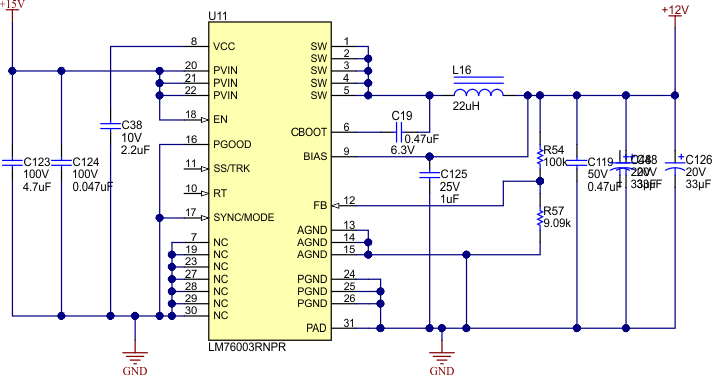TIDUE53I march 2018 – july 2023 TMS320F28P550SJ , TMS320F28P559SJ-Q1
- 1
- Description
- Resources
- Features
- Applications
- 6
- 1System Description
- 2System Overview
-
3Hardware, Software, Testing Requirements, and Test Results
- 3.1 Required Hardware and Software
- 3.2 Testing and Results
- 4Design Files
- 5Trademarks
- 6About the Authors
- 7Revision History
2.3.4.1 Main Input Power Conditioning
The primary voltage input for the design is rated for 15 V to 60 V. This wide VIN enables the inverter to be powered from a variety of industrial voltage sources that might be used in a larger system. The range is enabled by the LM76003 synchronous step-down converter.
The converter is configured for a 12-V output using the R54 and R57 feedback resistor divider. This 12-V rail is then used to power the relays, fans, isolated gate drive bias supplies, and the remainder of the step-down converters in the system. The 3.5-A output support of the LM76003 is sufficient for this operation. The design also includes dual parallel output capacitors to reduce ESR and subsequent ripple and load transients and loads switch on an off.
 Figure 2-41 LM76003 12-V DC/DC Converter
Figure 2-41 LM76003 12-V DC/DC Converter